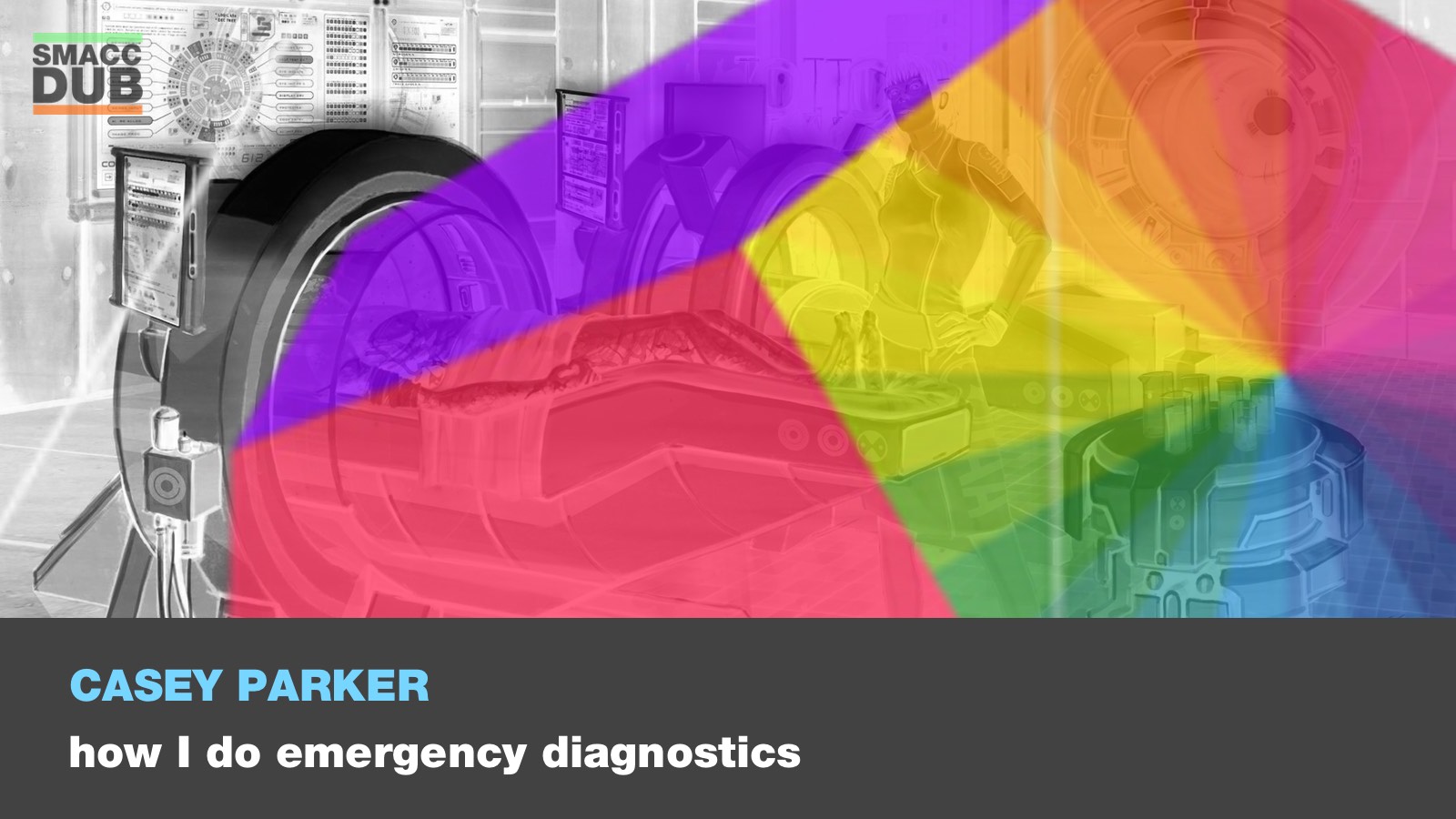Diagnostics in Critical Care by Casey Parker
Diagnostic medicine is not simple – Casey Parker discusses the finer points of the diagnostic process in critical care.
Diagnosis is not black and white. The world is not black and white. It is all shades of grey and about probability.
One tool that clinicians have to deal with probability is Bayes’ theorem. Since it was first described in 1763 Bayes’ theorem has been applied, rejected, and rediscovered in many fields. Its use in medical diagnostics is a relatively recent phenomenon.
This talk will review the history of Bayes in medicine. Since 1763 the medical world has made dramatic leaps forward. However, Bayes’ theorem still has its place. It has been made more accessible with nomograms and more recently handy clinical decision-making tools in the form of smartphone apps.
Casey helps you put all this together by elaborating on the diagnostic process.
Firstly, is the pre-test probability – how likely is a disease in any given population. Not all populations are the same. Therefore, depending on where you work, you need this into account when assessing patients. How do we arrive at pre-test probability? Casey details the three ‘G’s. Gut feeling, gestalt, or guess work.
Secondly, are likelihood ratios. These exist independently of the population and can be described as a marker of signal to noise. For example, when a radiographer tells you there is a PE on a CT, this is not strictly true. Rather there is a chance of a PE. Next Casey discusses choice of tests. He stresses – do the test with the highest diagnostic yield.
For instance, in a young female with abdominal pain you may consider a diagnosis of appendicitis or pelvic inflammatory disease. Blood tests and ultrasound will not help you in this case. A laparoscope is the diagnostic tool of choice in this case.
Finally, the post-test probability – where the rubber meets the road. Where probability is converted into action. Consider the threshold to treat.
This should be determined by three factors:
1. How bad is the disease?
2. How good or bad is the treatment?
3. How bad/dangerous is the test?
Join Casey as he challenges you on diagnostics in critical care.
Diagnostics in Critical Care: Casey Parker
Finally, for more like this, head to our podcast page. #CodaPodcast
Casey Parker
GP working in Broome in the NW of Western Australia. I work as a rural generalist doing Emergency, Anaesthestics, Paediatrics some Obstetrics and a lot of miscellaneous primary care. I have a passion for ultrasound and diagnostics in ED.





